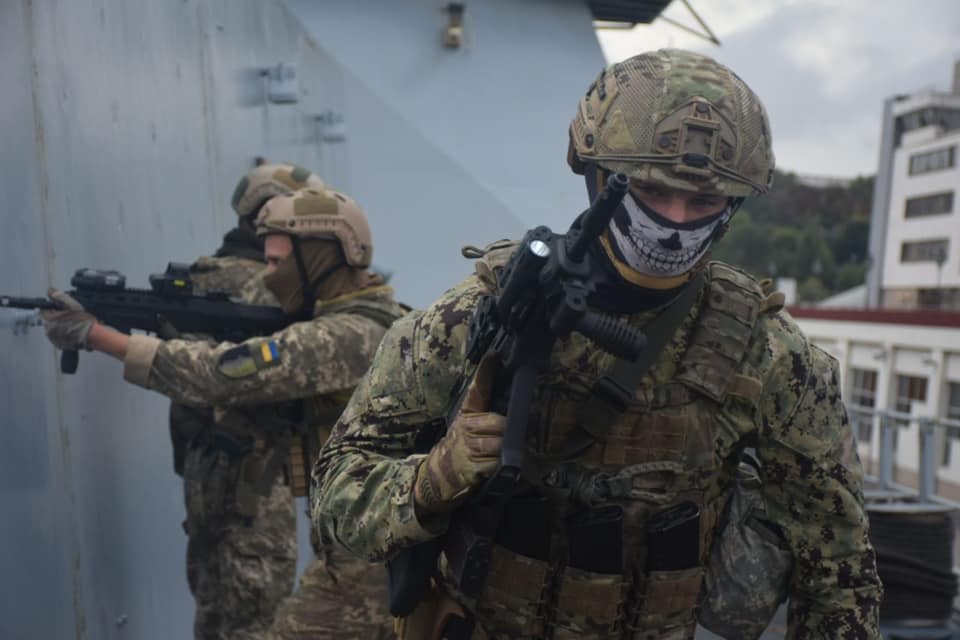Nonetheless, the UASOF still suffers from some obstacles on its road to superior combat readiness. Chief among them is a lack of financing, which is common to the entire Armed Forces. Despite its small size compared to Ukraine’s other military branches (only around 2,000 personnel), the UASOF, by its very nature, requires the most advanced weapons and equipment, which is expensive and produced mostly abroad. At present, the focus of the UASOF Command is on the development of the Special Operations Forces’ maritime and air components (UASOF, April 21). One possible means to resolve this problem is through international support. For example, in February, Ukraine received another batch of military equipment from the United States: including, 20 used humvees and 84 small boats (Ukrinform, February 10). Part of this military aid was transferred to the UASOF. Earlier, the 73rd Naval Special Operations Center received new diving equipment from international partners (ArmiaInform, September 15, 2020). But the reconstruction of the UASOF base on Maysky Island (home of the 73rd naval center) requires a serious funding infusion because most of the buildings and training areas date back to the Soviet era (Novinarnia, September 4, 2019).
Amidst Russia’s loud sabre-rattling, U.S. delivers military hardware to Ukraine
A similar situation concerns the UASOF’s newly created air force component. Officially, it was established in 2019, according to a joint directive of the UASOF commander and the commander of the UAF Air Force Command; however, practical steps toward its formation were made only in January 2020, with the launch of the 35th Mixed Squadron. Its structure resembles that of the 456th Transport Aviation Brigade; but at the operational level, it is subordinated to the UASOF Command. The squadron wields Soviet-made helicopters (Mi-2 Hoplites and Mi-8 Hips) and An-26 Curl planes, which need to be replaced with modern aircraft, like the US CV-22 Osprey, to fit the needs of the UASOF (Ukrmilitary, January 4, 2020). Because of the current state of the Ukrainian economy, such procurements will likely only be possible with the help of international partners.
The other major challenge for the UASOF is manning. The outflow of personnel is a common problem for the entire Ukrainian Armed Forces (see EDM, March 15, 2021), but for the UASOF it is even more critical because of the relatively high training costs per operator. Moreover, the current structure of the UASOF has to be expanded. More battle positions are needed in the existing units; and new staff members are required within the UASOF Command to allow this body to take command of a future resistance movement, should one become necessary in a large-scale war. A new draft law recently introduced by President Volodymyr Zelenskyy, aimed at increasing the total size of the Armed Forces from 250,000 to 261,000 personnel, could permit this (Rada.gov.ua, May 25). As part of this expansion in manning, 1,000 new troops would specifically go to the UASOF. On June 9, the Verkhovna Rada (parliament) Committee for National Security, Defense and Intelligence recommended approving this draft law (Rada.gov.ua, June 9).
A somewhat less significant but still troublesome issue is the poor level of foreign language knowledge among UASOF personnel. Insufficient English-language skills negatively affected the evaluation process of one of the special operations land task groups (SOLTG) from the 3rd special forces regiment during the Rapid Trident 2019 exercise, for instance (Tyzhden, March 13, 2020). According to the current UASOF commander, General Grigoriy Galagan, foreign language fluency is among the key criteria for commanders of UASOF units (UASOF, April 21). As such, operators have intensified their efforts in studying English.
At the same time, UASOF development also suffers from political wrangling. Current special forces operations in the Donbas combat zone are extremely limited in part due to the official ceasefire between Ukraine and the Moscow-backed Donetsk and Luhansk “people’s republics” (DNR/LNR). But these elite units are also affected by domestic conflicts between various stakeholders and politicians. In an exclusive interview with this author, General Serhiy Kryvonos, the former deputy commander of the UASOF, listed what he considers to be the two major problems for this branch of service. First, the individuals in charge of the UASOF’s development lack the necessary experience yet still believe that can manage the process by themselves. Fuller understanding requires having served across all levels and positions within such a unique organization, General Kryvonos posited. The second problem, according to him, is a systemic focus on process instead of on the outcome. Unfortunately, the officer stressed, the current state of the UASOF is quite different from what he believes is needed. In his opinion, many of those who were able to make some organizational shifts later left for various reasons. Kryvonos thinks that one of the reasons for the decreased use of the UASOF in Donbas is its inability to effectively carry out tasks on the battlefield. “We have seen some limitations, like ceasefires before, but this did not affect the UASOF missions in previous years” (Author’s interview, May, 28).
Read More:
- The 2021 Brussels NATO summit: triumph or defeat for Ukraine?
- Defense reform in Ukraine: The leadership challenge
- Role of airborne troops in Russia’s military buildup in occupied Crimea
- Threat of major Russian military operation against Ukraine and West hasn’t disappeared, Felgengauer says
- Escalation around Donbas: Is the Ukrainian army prepared for full-scale Russian aggression?
- Amidst Russia’s loud sabre-rattling, US delivers military hardware to Ukraine
- Ukraine’s Territorial Defense volunteers prepare to support army in case of Russian invasion
- While President Zelenskyy promises peace, Ukraine’s Army faces serious challenges





